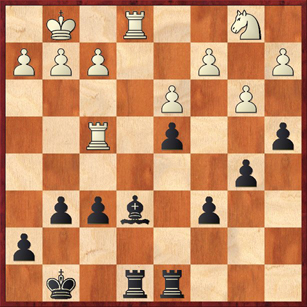Hi chess fans! There are many places on the Web where you can read about the super-GM tournament in Linares, but only here can you read about the Santa Cruz Cup!
Today we “almost” finished the round-robin portion of our tournament, but there is one game yet to play, and it will be an important one. In today’s action, Ilan Benjamin beat Dan Burkhard, Juande Perea beat Ken Seehart, and I drew with Yves Tan. So the standings currently are:
- Benjamin 6.5
- Perea 5
- Mackenzie 5
- Burkhard 3
- Tan 2.5
- Mallett 2 + 1 left to play
- Seehart 2
- Parker 1 + 1 left to play
As you can see, the game Mallett-Parker is crucial; if Mallett wins, then he and Burkhard will have a playoff to decide who qualifies for the top quad and who qualifies for the bottom one. After their epic game last week, it will be interesting to see how that battle goes!
Interestingly, whoever gets into the top quad will do so with a losing record (3-4). It will be a great chance for either Dan or Jeff to rescue what has been a disappointing tournament for them so far. On the other hand, Ilan, with his 6.5-0.5 score, must wish that the tournament were over right now! So far, he’s been as steady as a rock. Except in the first round, when he blundered the exchange against Jeff and then miraculously came back and won the game, I don’t think that he has had a single uncomfortable position.
My game with Yves Tan was not all that exciting. I told myself before the game to focus more on the process than the result. Yves is a solid player, and I had Black, so I recognized that a win might not be in the cards; I just didn’t want to make any mistakes. I did get a slight advantage, but wasn’t able to make anything of it. We traded down to an endgame that I could only win if he messed up, but he refused to mess up.
There was one moment in the game that is worth looking at:
Here I had just moved my rook on f8 to e8, setting a little trap: If 25. Rxf6? Bxb3! wins because of the back-rank checkmate threat. Of course I was expecting him to see that and play 25. R4e4 Kf7 etc. Well, he did see the trap, but instead of playing 25. R4e4 he played 25. Kf1? instead. I was a little surprised, but I sort of played 25. … Kf7? on autopilot. If I had been alert, I would have seen that 25. … f5! is better, because it “strands” the rook on f4. It can’t get back to the e-file and has a hard time finding any other useful place to go. I think Black would have had a big, perhaps winning advantage.
But instead, after 25. Kf1? Kf7? 26. Nd2 g5 he got a chance to undo the damage with 27. R4e4. I played 27. … Bd5, allowing him to trade all the rooks with 28. Rxe8 Rxe8 29. Rxe8 Kxe8. I thought I might still have winning chances here because my bishop dominates his knight, but after 30. ba ba 31. a3 my problem was that there are no entry squares into White’s position.
To win the game Black had to keep at least one pair of rooks on the board. After the game we looked a little bit at stuff like 27. … c5, followed up by 28. … Rc8 and maybe … c4, but we couldn’t really find anything concrete. The computer didn’t either. I think the position after he doubles rooks on the e-file is just a draw.



